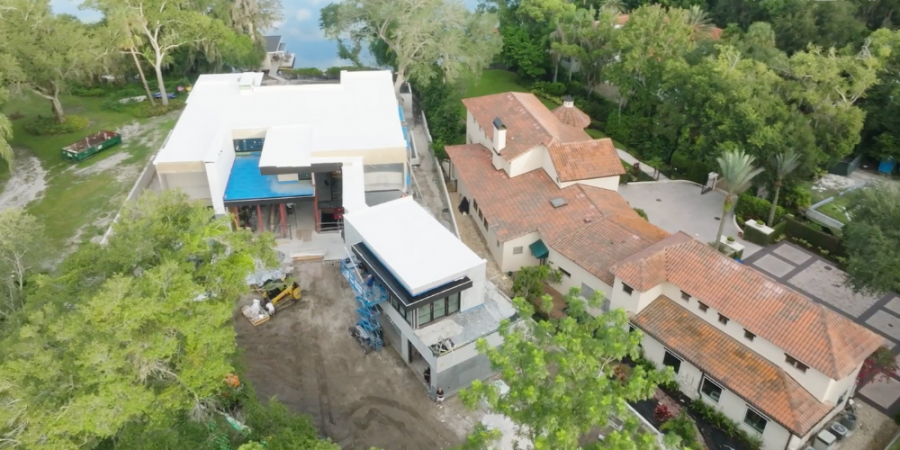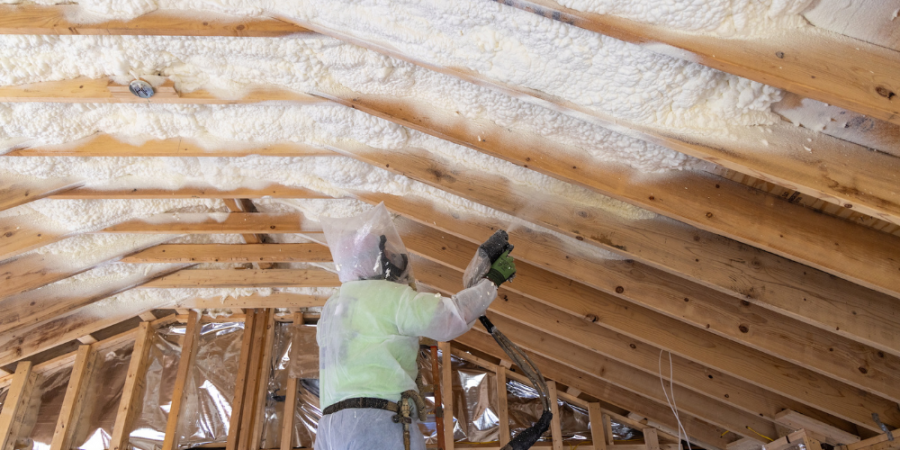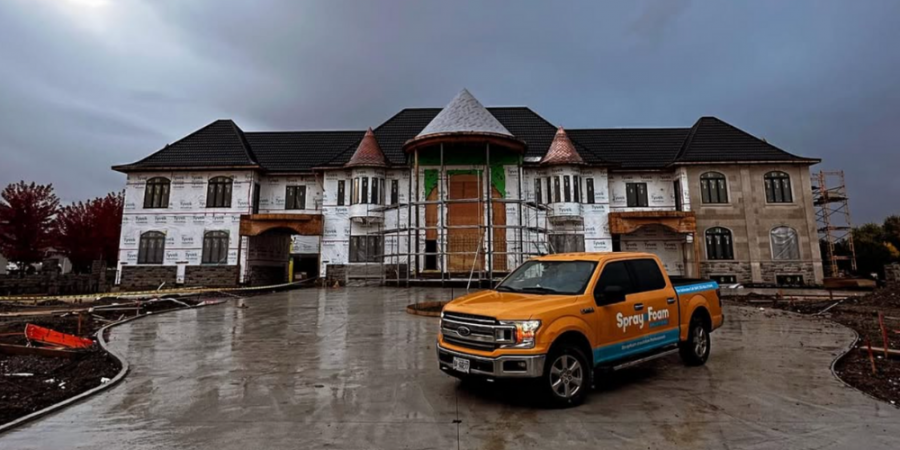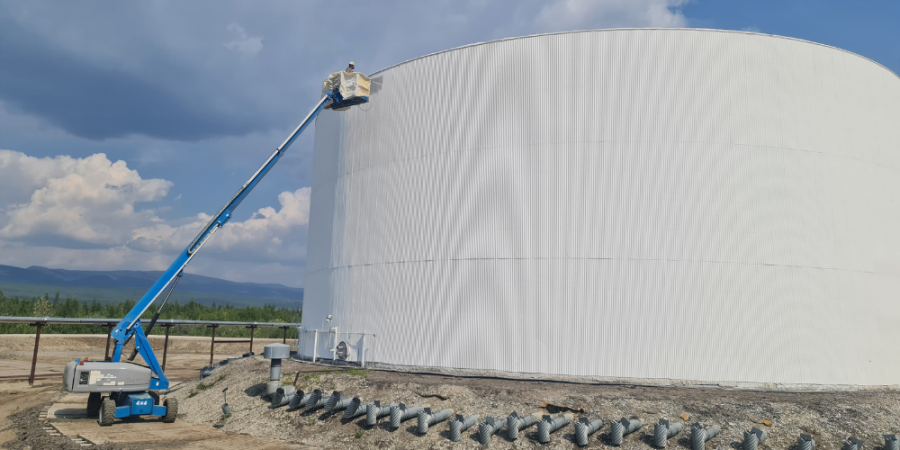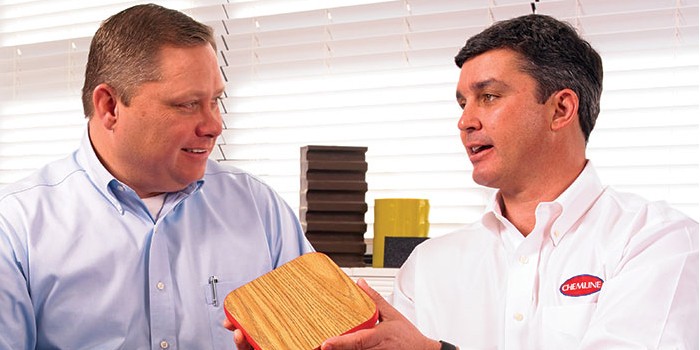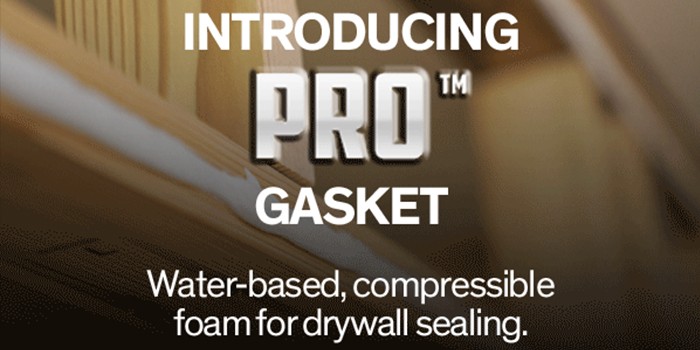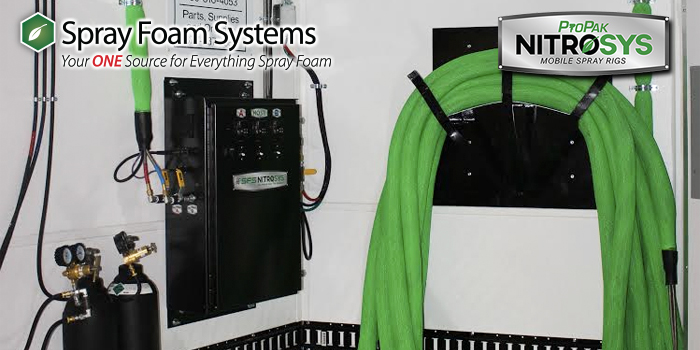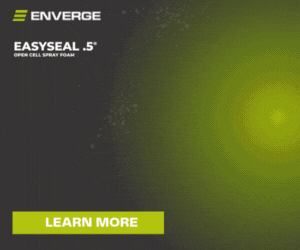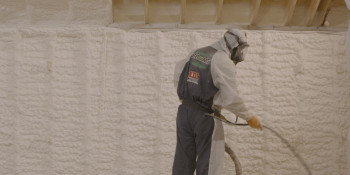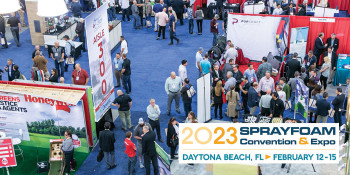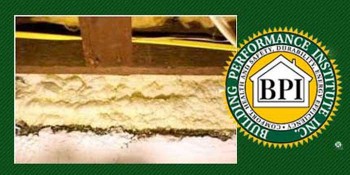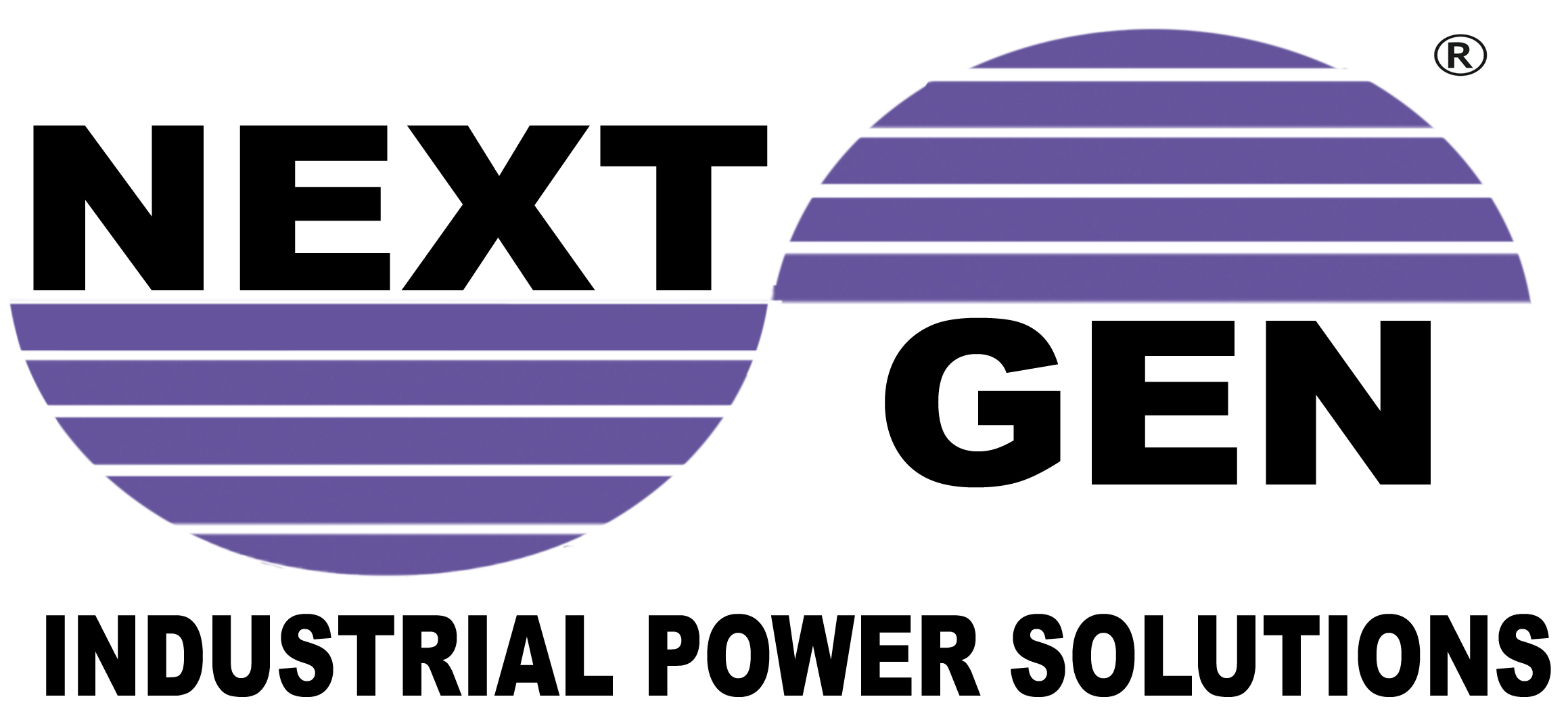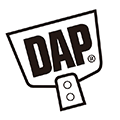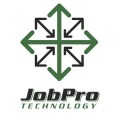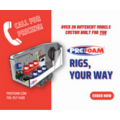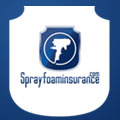Rethinking the Roof
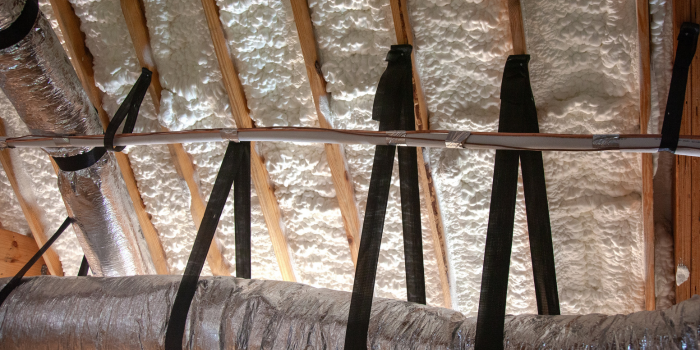

Spray Foam Magazine – Summer 2025 – The attic, though often overlooked, is fundamentally critical to a home’s overall performance. Far from being mere empty space, the attic significantly influences energy consumption, occupant comfort, structural durability, and indoor air quality. Rethinking traditional attic design—specifically by adopting an unvented approach using spray foam insulation—is essential for creating truly high-performing building envelopes. This shift involves strategically integrating the attic into the building’s high-performance system, a transition facilitated by advanced materials and building science understanding.
Vented vs. Unvented Attics: Understanding the Key Differences
Historically, attics were vented, with insulation and the primary air barrier placed on the attic floor. Vents allowed exterior air circulation, intended to remove moisture in cold climates and provide some summer cooling. However, this exposes the attic and any HVAC equipment within it to harsh exterior conditions.
Modern building science offers the unvented attic (or sealed/conditioned attic) as a superior alternative. With spray foam insulation, the thermal and air barriers move to the roofline, typically applied to the underside of the roof deck. This brings the attic inside the conditioned or semi-conditioned envelope, isolating it from the outdoors. This integration contrasts sharply with traditional venting’s coupling with the exterior. Research shows venting can worsen moisture issues in humid climates by drawing in moist air, making the unvented approach more reliable for moisture control when properly executed.
The Foundation of Performance: The High-Performing Building Envelope
A high-performing building envelope—the walls, roof, foundation, windows, and doors separating interior from exterior—is optimized for thermal control, airtightness, moisture control, durability, and occupant comfort. It functions as an integrated system. An unvented attic supports this by creating a continuous control layer at the roofline, seamlessly connecting with wall assemblies.
Unvented Attics: Elevating Building Envelope Performance
Unvented attics significantly enhance building performance:
Improved Thermal Performance & Energy Efficiency: Eliminating extreme attic temperatures reduces heat transfer and lowers heating/cooling loads. Enclosing ducts in this conditioned space drastically cuts energy losses common in vented attics.
Superior Airtightness: Applying an air barrier to the simpler roof deck plane is more effective than sealing the complex attic floor, reducing energy loss.
Enhanced HVAC Efficiency & Durability: Protecting HVAC equipment and ducts from extreme temperatures improves efficiency and lifespan. Duct leakage, a major energy drain in vented attics, is contained within the conditioned space, improving system performance and potentially allowing for smaller equipment.
Better Moisture Management: Unvented attics prevent humid air infiltration, reducing condensation risk, especially in humid climates. They also block entry points for wind-driven rain.
Increased Resilience: These designs can improve wind resistance, reduce wildfire ember intrusion, and protect framing from salt spray in coastal areas.
The Enverge® Solution: Why Spray Foam Excels
Creating a successful unvented attic relies on multi-functional insulation. Enverge Spray Foam Insulation (SPF) is uniquely suited:
Air Sealing: Enverge SPF expands to fill every gap, creating a monolithic air barrier. Both open-cell (like Enverge EasySeal® .5 or bio-based SucraSeal®) and closed-cell (like Enverge OnePass® or NexSeal®) products provide outstanding air sealing.
Thermal Performance: SPF offers high R-values. Enverge closed-cell foams provide R-values of R-6.5 to R-7.2/inch, ideal for achieving high insulation levels in limited space. Enverge open-cell foams offer R-values of R-3.7-R-3.8/inch and add sound dampening benefits.
Adhesion & Conformance: SPF adheres to any building surface, conforming to complex framing for a continuous barrier.
Moisture Management: Enverge closed-cell foams (OnePass, NexSeal) resist moisture and act as vapor retarders, managing condensation risk.
Structural Enhancement: Closed-cell SPF adds rigidity to the roof assembly.
Enverge SPF, particularly closed-cell products like OnePass and NexSeal, combines thermal insulation, air barrier, and vapor control in one application, simplifying construction and enhancing performance. The choice between Enverge open-cell and closed-cell foam depends on factors like climate, region, and project objectives.
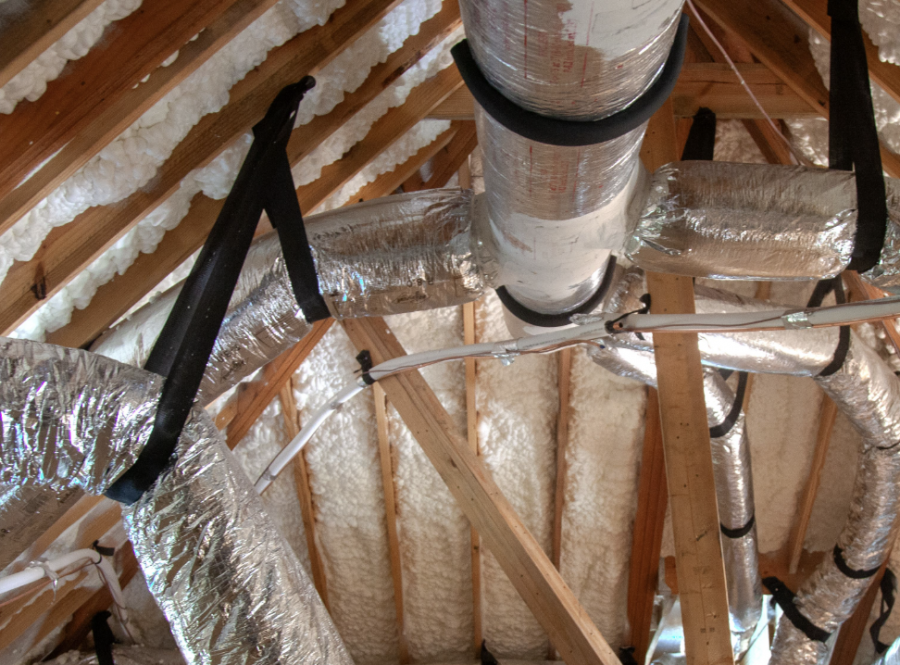
Moving the thermal boundary to the roof deck with spray foam insulation brings the HVAC system into the building envelope, extending the life of mechanicals and lowering heating and cooling costs.
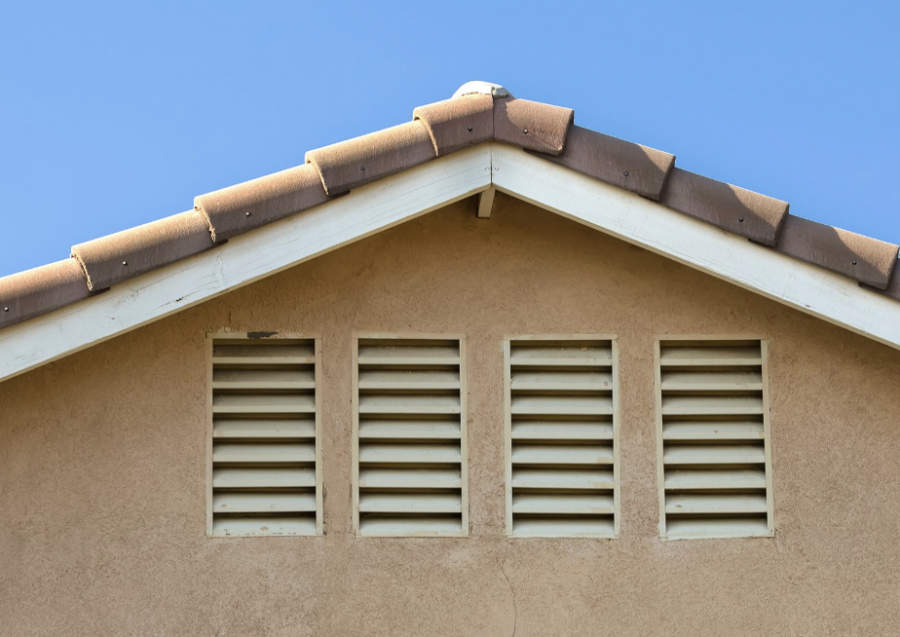
Traditional vented attics waste energy and money by leaking conditioned air to the outside environment.
Building it Right: Codes, Practices, and Support
Building codes like the IRC permit unvented attics with specific requirements, including air-impermeable insulation (like SPF) applied directly to the roof deck. Fire safety requirements must also be met. Achieving full benefits requires meticulous installation. Enverge supports contractors with comprehensive training and building science expertise to ensure applications meet the highest standards.
The Unvented Attic Advantage
Unvented attics significantly advance building performance, offering energy efficiency, comfort, and durability. They provide superior moisture management, crucial in humid climates. The benefits include energy savings, better air quality, stable temperatures, and resilience. Enverge Spray Foam provides ideal material solutions, offering tailored products like OnePass, NexSeal, EasySeal .5, and SucraSeal to create effective, integrated barriers. Investing in an Enverge SPF supported unvented attic system enhances long-term performance and occupant well-being.
Disqus website name not provided.






